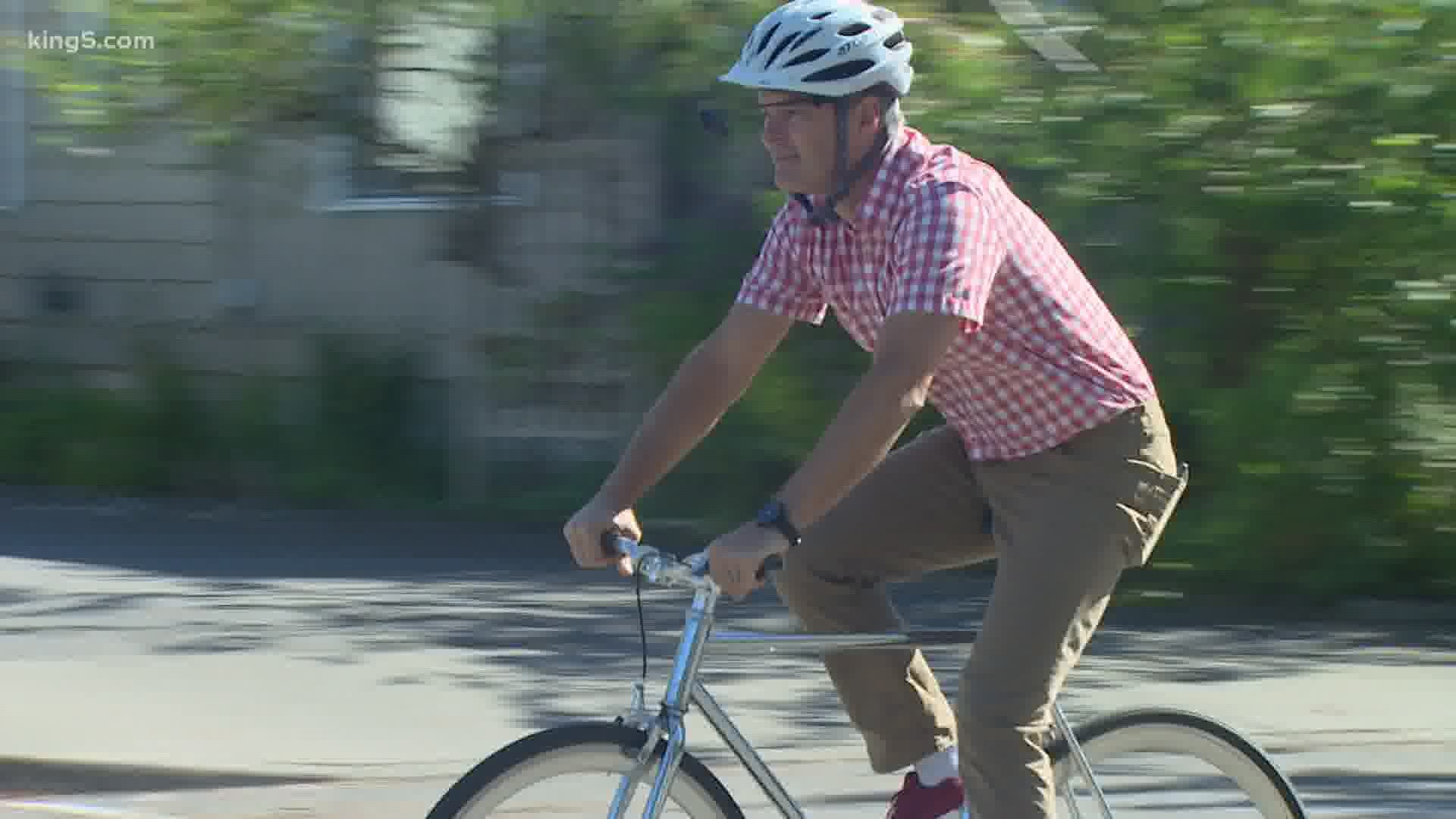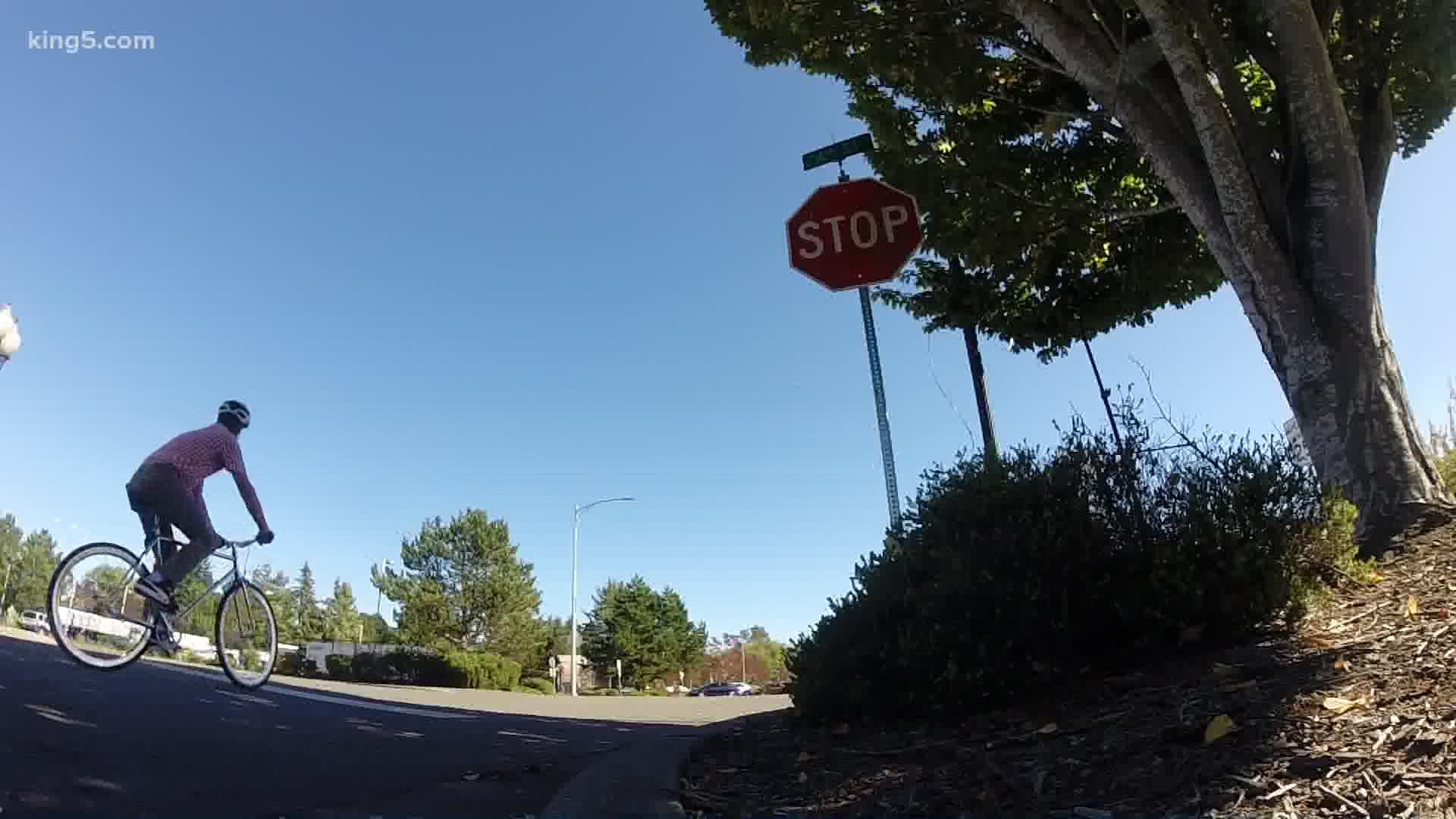BLAINE, Wash. — A new Washington law is now on the books that allows cyclists to treat stop signs as yield signs.
It sounds dangerous, but experts believe it will actually make the roads safer for everyone.
Doug Dahl is a former sheriff’s deputy. He’s now a manager with the Washington Traffic Safety Commission and is an avid bicyclist.
He knows a thing or two about safety.
“Yeah, I’ve spent a lot of time on the roads,” he said.
When you see Dahl riding his bike these days, you’ll rarely see him stop at a stop sign, unless he absolutely has to.
“If you’re a cyclist, the first time you hear about this you might think it’s a bad idea because cyclists are very vulnerable,” Dahl said.
The new state law was enacted Thursday, Oct. 1.
The law states cyclists don't have to come to a complete stop when they approach a stop sign. They're allowed to roll through the intersection if it's safe to do so.
A similar law has been on the books in Idaho for nearly 40 years, bringing an immediate 14% decrease in bicycle crashes.
Dahl says it will increase safety for cyclists by giving them more flexibility on the road.
“Intersections are danger zones,” Dahl said. “By yielding and not coming to a full stop, cyclists spend less time in an intersection, which is good because intersections are pretty high risk locations. Also, momentum is really helpful for cyclists. If you’re stopped it’s a lot harder to get going on a bike. You have fewer options for how to get out of the way of something, or hazards that may come up.”
Dahl concedes drivers will grumble about bicyclists getting another break that those using four wheels aren't.
He believes, though, the law makes the roads better for drivers, as well.
“It makes things more efficient for the drivers because they’re not waiting for cyclists in an intersection,” Dahl says. “I think it benefits cyclist safety. I think it improves driver efficiency. I don’t see a downside.”


